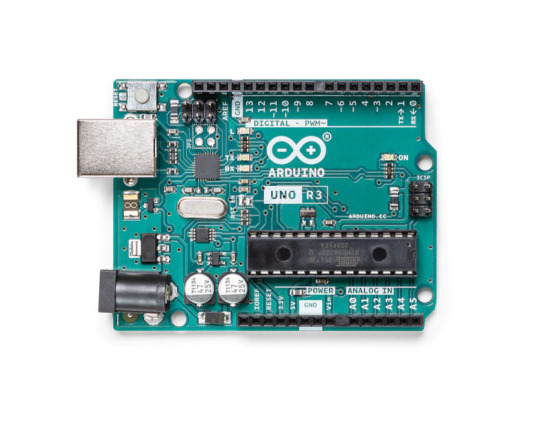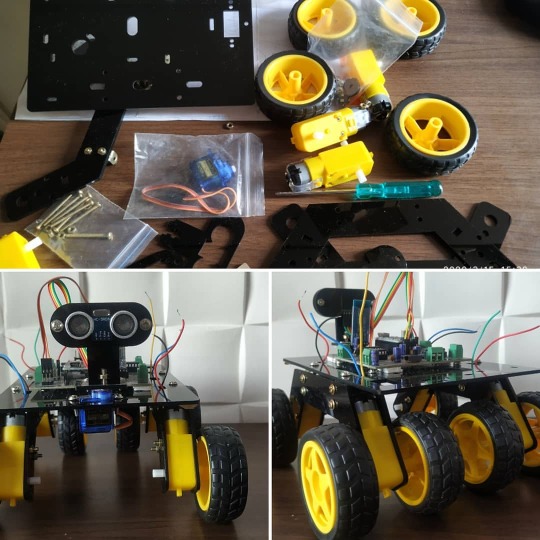#arduino rc
Explore tagged Tumblr posts
Text
youtube
2 notes
·
View notes
Text
Building an RC boat that may or may not work, and I have to learn whatever language Arduino uses FUHK
2 notes
·
View notes
Text

guys it is my pleasure to inform you all that I have found an arduino library that will receive inputs from my rc controller without messing with my hovercraft's motors
4 notes
·
View notes
Text
I had to run by a Radio Shack on a few occasions for electronics components right up til their eventual closure. They had the “electronics components” as a category, but they were largely supplying them from a small stack of cabinets, and not even all of that was populated, alongside maybe two or three types of ‘general starter electronics kit’. Forget “building a radio”: the local place didn’t even have a full E6 resistors or magnet wire. And their staff would be better trained to sell RC cars or cell phones (the latter of which was nearly half the store by 2012) than to answer even simple electronics questions.
((Note the lack of transformers even listed on those cabinets; at best they’d have a couple variable-voltage wall warts.))
Their online catalog was better in variety -- I got a lot of copper-plated boards during their going-out-of-business sale -- but it was nowhere near competitive with online sellers even before dropshipping ate the world. In many cases you’d be looking at three- to five-fold markup over McMaster-Carr or DigiKey prices, even including shipping.
Which... kinda points to the issue with foone’s alternate proposal. A RadioShack trying to sell to hobbyist enthusiasts would have still had to compete with the internet, and hobbyists ended up being pretty fickle about large purchases, too, no matter how much brand loyalty they might have had at a day-to-day basis.
With good reason: those electronics components cabinets often had a 10-fold markup over buying the same from local used electronics shops or 20-fold from online vendors, but if you needed a D-25 or a stack of LEDs in a hurry you’d be willing to pay a couple bucks for the convenience. And those really weren’t enough to keep the lights on or doors open at the scale -- even small family used electronics shops have to operate at a drastically different format. Meanwhile, if you wanted to make even a moderately-complicated electronics circuit, you’d be looking at tens if not hundred of dollars in price differences between RadioShack’s local options and online sellers.
((And, separately, the modern education system had absolutely slaughtered any interest in low-level electronics pre-Arduino, and not just as primary or secondary school levels. I’ve talked with post-grad EEs who hadn’t touched a component smaller than a NAND gate. The internet has done amazing things for connectivity and community among hardware enthuisiasts, but we’re still a dying breed.))
But RadioShack’s pre-00s business model sold the small stuff like transformers and capacitors so that it could also sell the big stuff: sound systems, full radio kits, so on. Even back in the 1980s, they were far more . The point of selling mechanical keyboards, had they made it to today, wouldn’t be to sell a handful of 50-cent cherry switches for $3 each, but that they could sell a 50-buck mechanical keyboard kit for $200. I think that would have been a more successful approach in retrospect... but it’d also be the sort of thing that would have been ‘successful’ on the scale of a few hundred stores at most, rather than the thousands that RadioShack was operating (and often locked into).
((They did sell Arduino and RaspberryPi-style kits, mostly MAKE magazine or Seeed-variant stuff, just around 2012-2013. But they were very much marketed at Young Children Educational Gifts rather than viable projects.))
Microcenter and some hardware stores have taken that approach, and they do exist -- though it’s still not their core focus so much as a way to drive other sales -- but they’re the sort of business that can only support a location or two per city, rather than the convenient strip-mall front that RadioShack aimed for.
Does anyone remember what happened to Radio Shack?
They started out selling niche electronics supplies. Capacitors and transformers and shit. This was never the most popular thing, but they had an audience, one that they had a real lock on. No one else was doing that, so all the electronics geeks had to go to them, back in the days before online ordering. They branched out into other electronics too, but kept doing the electronic components.
Eventually they realize that they are making more money selling cell phones and remote control cars than they were with those electronic components. After all, everyone needs a cellphone and some electronic toys, but how many people need a multimeter and some resistors?
So they pivoted, and started only selling that stuff. All cellphones, all remote control cars, stop wasting store space on this niche shit.
And then Walmart and Target and Circuit City and Best Buy ate their lunch. Those companies were already running big stores that sold cellphones and remote control cars, and they had more leverage to get lower prices and selling more stuff meant they had more reasons to go in there, and they couldn't compete. Without the niche electronics stuff that had been their core brand, there was no reason to go to their stores. Everything they sold, you could get elsewhere, and almost always for cheaper, and probably you could buy 5 other things you needed while you were there, stuff Radio Shack didn't sell.
And Radio Shack is gone now. They had a small but loyal customer base that they were never going to lose, but they decided to switch to a bigger but more fickle customer base, one that would go somewhere else for convenience or a bargain. Rather than stick with what they were great at (and only they could do), they switched to something they were only okay at... putting them in a bigger pond with a lot of bigger fish who promptly out-competed them.
If Radio Shack had stayed with their core audience, who knows what would have happened? Maybe they wouldn't have made a billion dollars, but maybe they would still be around, still serving that community, still getting by. They may have had a small audience, but they had basically no competition for that audience. But yeah, we only know for sure what would happen if they decided to attempt to go more mainstream: They fail and die. We know for sure because that's what they did.
I don't know why I keep thinking about the story of what happened to Radio Shack. It just keeps feeling relevant for some reason.
34K notes
·
View notes
Text
Arduino Projects
The open-source electronics platform Arduino is built on user-friendly hardware and software. Microcontroller boards that can read inputs (such as motion, temperature, or light) and control outputs (such as motors, LEDs, or displays) make up this system. The Arduino IDE (Integrated Development Environment), which uses a basic programming language based on C++, can be used to program these boards.
Key features of Arduino include:
Easy to use: Perfect for novices who have never worked with electronics or programming.
Versatile: Accommodates a large variety of sensors and actuators for a range of uses.
Cost-effective: Hardware that is reasonably priced and appropriate for both home and school use.
Community-Driven: An active worldwide community offering guidance, materials, and assistance.
Top Arduino Projects for Beginners and Beyond
LED Light Show
Temperature and Humidity Monitor
Smart Plant Watering System
Obstacle-Avoiding Robot
Home Automation System
DIY Security System
Weather Station
Digital Dice
Heartbeat Monitor
RC Car
Advanced Arduino Projects
3D Printer: Using Arduino as the control unit, create and put together your own 3D printer.
Quadcopter Drone: Construct and configure a drone that can fly itself.
IoT Applications: Create Internet of Things (IoT) gadgets to remotely monitor and manage systems.
Arduino has revolutionized programming and electronics by making it accessible to anyone. Regardless of your learning, creative, or innovative goals, Arduino offers the resources and community support you need to realize your vision. So pick up a board, start learning from tutorials, and get constructing now!
To know more, click here.
1 note
·
View note
Text
Patrol the pool with this Arduino Nano-powered DIY RC submarine
https://www.instructables.com/Diy-Rc-Submarine/
0 notes
Photo

Exploring the Arduino UNO: A Beginner's Guide to DIY Electronics - Robu.in | Indian Online Store | RC Hobby
0 notes
Text
Sklep modelarski - mekka pasjonatów kreatywności
Nie ulega wątpliwości, że wiele osób poszukuje swojej odskoczni od codziennych spraw i trosk. Jednym z przykładów przyjemnego hobby dla zabicia czasu jest modelarstwo. To idealne zajęcie dla tych, którzy odnajdują radość w tradycyjnych, manualnych zajęciach. Sklepy modelarskie okazują się być prawdziwą mekką i encyklopedią wiedzy, dla wszystkich wielbicieli majsterkowania, a o tym, jakie posiadają znaczenie dla hobby i nie tylko, dowiesz się w poniższym artykule!

Co charakteryzuje sklep modelarski?
Wchodząc do sklepu modelarskiego, otwiera się przed nami fascynujący świat różnorodnych produktów. Nie tylko modele do sklejania czy malowania, ale także wszelkiego rodzaju narzędzia, farby, pędzle, kleje i akcesoria. Jednym z największych atutów takich sklepów jest wykwalifikowany personel, który gotów jest służyć fachowym doradztwem. Klienci mogą liczyć na pomoc w doborze odpowiednich materiałów, porady dotyczące technik malarskich czy wskazówki dotyczące skomplikowanych montaży. Profesjonalizm obsługi sprawia, że wizyta w sklepie modelarskim to nie tylko zakupy, ale również inspirująca podróż po świecie modelarstwa.

Dowiedz się więcej
Jeśli poszukujesz sprawdzonego i renomowanego sklepu modelarskiego, to koniecznie sprawdź stronę internetową abc-rc. To właśnie na niej czeka na Ciebie szeroka oferta produktów związanych z modelarstwem, arduino, majsterkowaniem jak również przedmiotami codziennego użytku i gadżetami. Oprócz oferty produktowej sklep abc-rc posiada ogromną społeczność, która chętnie dzieli się wskazówkami oraz służy pomocą. Dowiedz się więcej i sprawdź sam!
0 notes
Text
See updated info here:
#diy drone#quadcopter#ardujimmy#youtube#rc quadcopter#arduino project#arduino#drone#flying test#electric vehicles
1 note
·
View note
Video
tumblr
Mecanum Wheel RC car made using Arduino and 3D printing
https://www.youtube.com/watch?v=a-ISxt0RKJ4&t=141s
1 note
·
View note
Photo

RC CONTROL
#Feedback
Completely designed from scratch with Arduino basics, this professional rc control circuit has all the necessary hardware. Bluetooth - Gyroscope - Oled Display - Potentiometers - Toogle Switches - Menu Buttons - Usb Input and more. It takes its power from a single 18650 battery and converts it to 3.3V and 5V with 2 different converters. It can also charge smart via USB.
-
-Learn more: https://bit.ly/3mSKUeO
3 notes
·
View notes
Video
youtube
Teaser of my fully 3d printed easy to build Android controlled Arduino Bluetooth RC Car DIY
3 notes
·
View notes
Photo

#newbuild #roboticcar #hardware #machine #rc #letsbuild #hardwaredesign #electronicsprojects #roboticsprojects #roboticsengineering #arduino #arduinoprojectideas #technicalstudies #schoolstudents #techstudent #technology #scienceexperiments #roboindotin #roboin (at Tangra, Kolkata) https://www.instagram.com/p/B9_TJVsFxYT/?igshid=1apsgy3scq206
#newbuild#roboticcar#hardware#machine#rc#letsbuild#hardwaredesign#electronicsprojects#roboticsprojects#roboticsengineering#arduino#arduinoprojectideas#technicalstudies#schoolstudents#techstudent#technology#scienceexperiments#roboindotin#roboin
1 note
·
View note
Video
instagram
Posted @withrepost • @life_of_an_engineer__ So a few people commented on the steering in my last video... using the wrong stick and also inverted. I’ve now corrected it to use the left stick for steering. Also have programmed the throttle and brake/reverse... should be ready for a test drive soon 😁 • • #rc #rccar #3dprintedrccar #3dprinter #xbox #transmitter #arduino #pcb #electronics #soldering #programming #pcbdesign #maker #programming #makersgonnamake #diyelectronics #diyprojects #rccars #xboxcontroller (at Busan, South Korea) https://www.instagram.com/p/B2tUFFpFWR_/?igshid=hu72aeaqh98d
#rc#rccar#3dprintedrccar#3dprinter#xbox#transmitter#arduino#pcb#electronics#soldering#programming#pcbdesign#maker#makersgonnamake#diyelectronics#diyprojects#rccars#xboxcontroller
5 notes
·
View notes
Text
My son

#i have spent 6 fucking months making this school project#i have suffered over this thing#if i dont get a goddamn A+ this thursday i will riot#btw its literally just a bluetooth rc car thats supposed to carry stuff in that basket#i just had never done anything with arduino. or wires. or pretty much anything like this#and my entire group was fucking robotics illiterate so#yeah ;)
1 note
·
View note
Photo

NRF Transceiver Module #nrf #nrftransmitter #nrftx #nrf24l01 #nrfreceiver #tx #rx #electronics #tech #arduino #nordic #remote #rc #remotecontrol https://www.instagram.com/p/CiKqb0mrw_Q/?igshid=NGJjMDIxMWI=
#nrf#nrftransmitter#nrftx#nrf24l01#nrfreceiver#tx#rx#electronics#tech#arduino#nordic#remote#rc#remotecontrol
0 notes